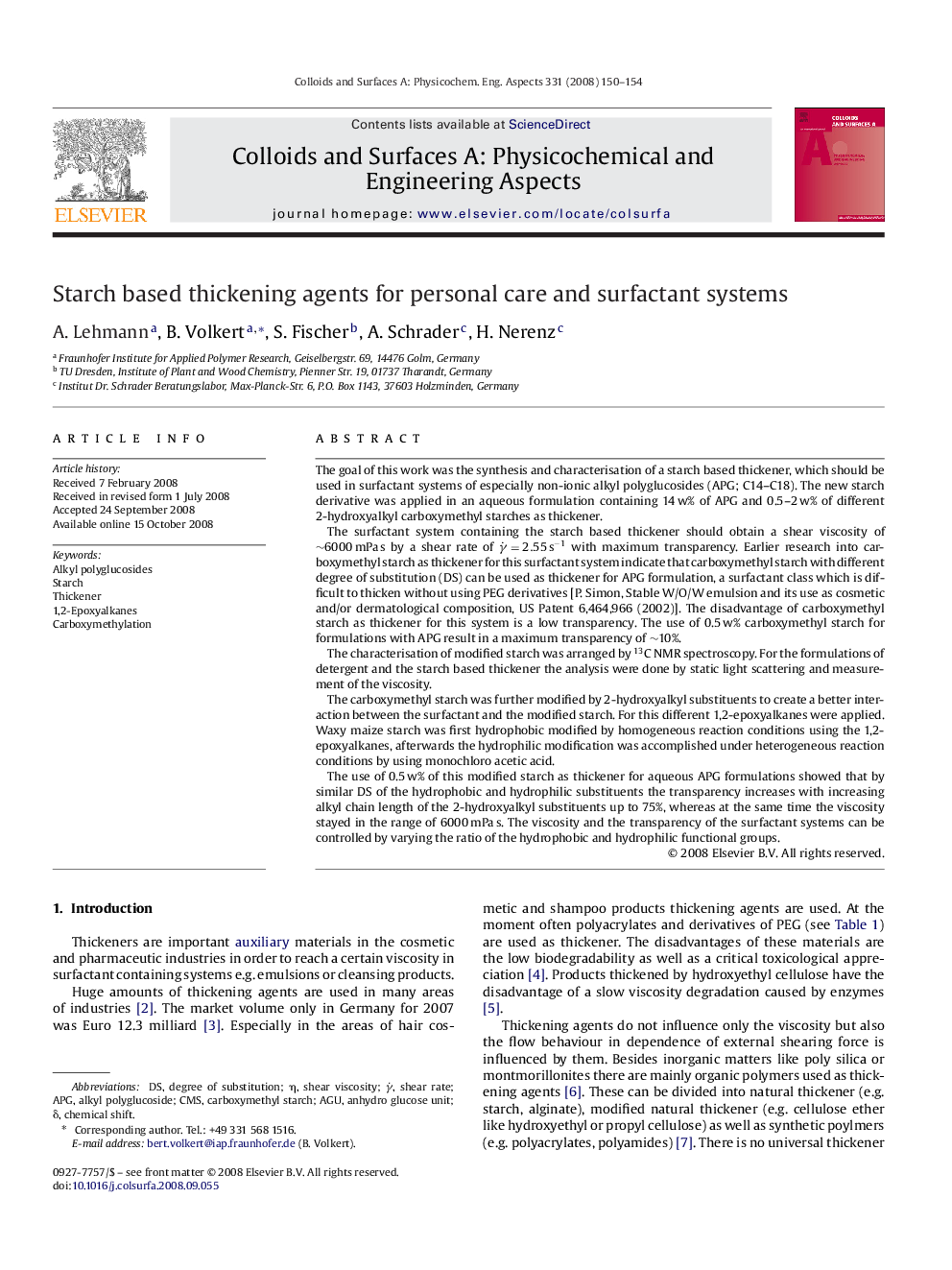| Article ID | Journal | Published Year | Pages | File Type |
|---|---|---|---|---|
| 596335 | Colloids and Surfaces A: Physicochemical and Engineering Aspects | 2008 | 5 Pages |
The goal of this work was the synthesis and characterisation of a starch based thickener, which should be used in surfactant systems of especially non-ionic alkyl polyglucosides (APG; C14–C18). The new starch derivative was applied in an aqueous formulation containing 14 w% of APG and 0.5–2 w% of different 2-hydroxyalkyl carboxymethyl starches as thickener.The surfactant system containing the starch based thickener should obtain a shear viscosity of ∼6000 mPa s by a shear rate of γ˙=2.55 s−1 with maximum transparency. Earlier research into carboxymethyl starch as thickener for this surfactant system indicate that carboxymethyl starch with different degree of substitution (DS) can be used as thickener for APG formulation, a surfactant class which is difficult to thicken without using PEG derivatives [P. Simon, Stable W/O/W emulsion and its use as cosmetic and/or dermatological composition, US Patent 6,464,966 (2002)]. The disadvantage of carboxymethyl starch as thickener for this system is a low transparency. The use of 0.5 w% carboxymethyl starch for formulations with APG result in a maximum transparency of ∼10%.The characterisation of modified starch was arranged by 13C NMR spectroscopy. For the formulations of detergent and the starch based thickener the analysis were done by static light scattering and measurement of the viscosity.The carboxymethyl starch was further modified by 2-hydroxyalkyl substituents to create a better interaction between the surfactant and the modified starch. For this different 1,2-epoxyalkanes were applied. Waxy maize starch was first hydrophobic modified by homogeneous reaction conditions using the 1,2-epoxyalkanes, afterwards the hydrophilic modification was accomplished under heterogeneous reaction conditions by using monochloro acetic acid.The use of 0.5 w% of this modified starch as thickener for aqueous APG formulations showed that by similar DS of the hydrophobic and hydrophilic substituents the transparency increases with increasing alkyl chain length of the 2-hydroxyalkyl substituents up to 75%, whereas at the same time the viscosity stayed in the range of 6000 mPa s. The viscosity and the transparency of the surfactant systems can be controlled by varying the ratio of the hydrophobic and hydrophilic functional groups.
